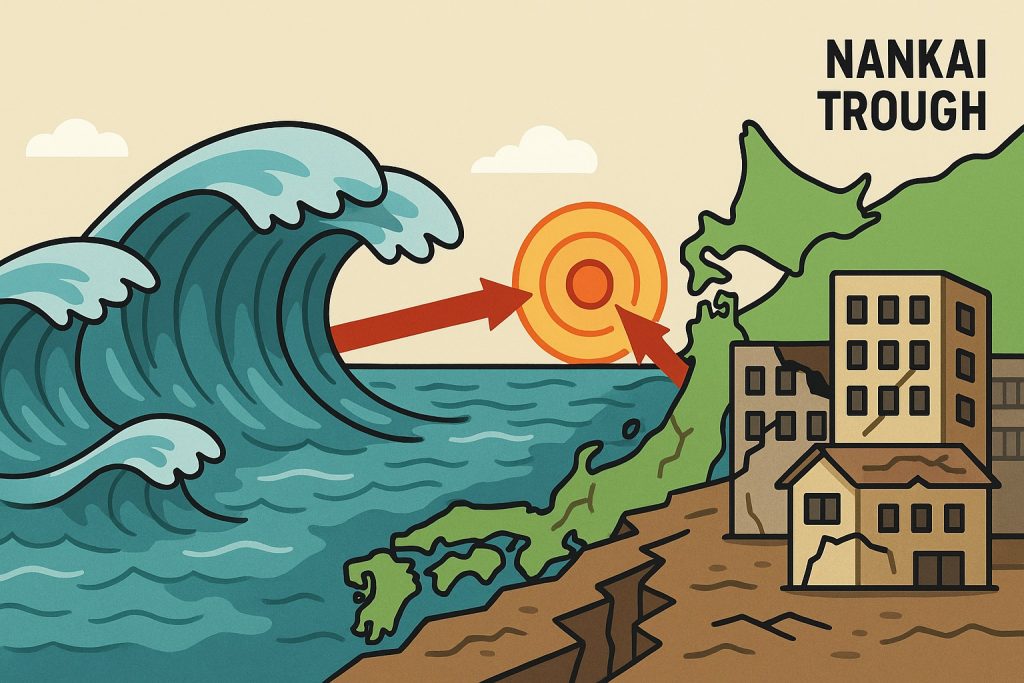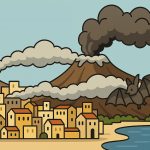The Nankai Trough is a major subduction zone located off the southern coast of Japan, where the Philippine Sea Plate dives beneath the Eurasian Plate. This region has a long history of producing powerful earthquakes and tsunamis, with events recurring every 100–150 years. Because of its proximity to densely populated areas, it is one of the most closely monitored tectonic zones on Earth.
Possibility of a Magnitude 10+ Earthquake
While earthquakes above magnitude 10 are extremely rare and theoretical, scientists do not rule out the possibility if an exceptionally large rupture occurred along the subduction zone. A magnitude 10+ event would release energy many times greater than the 2011 Tōhoku earthquake (M9.0), which already caused immense destruction.
Immediate Ground Shaking
A megathrust earthquake in the Nankai Trough would cause violent shaking lasting several minutes. Cities such as Osaka, Nagoya, and even Tokyo could experience widespread building collapses, infrastructure damage, fires, and disruptions to transportation and communication.
Tsunami Generation
The greatest danger would come from the tsunami. A rupture of this scale could displace enormous volumes of water, sending waves over 20–30 meters high crashing into the Japanese coastline. Low-lying coastal areas would be inundated within minutes, overwhelming sea walls and evacuation routes. Tsunami waves could also cross the Pacific, threatening countries as far as the United States, Chile, and Australia.
Regional and Global Consequences
The economic consequences would be devastating. Japan’s industrial hubs, ports, and power plants lie close to the Nankai region. A disaster of this magnitude would disrupt global supply chains, financial markets, and trade. On a global scale, millions of people could be affected by economic ripple effects.
Humanitarian Impact
Casualties could reach into the hundreds of thousands, with millions displaced. Emergency services would be overwhelmed, and international aid would be required on an unprecedented scale. Secondary disasters such as fires, landslides, and nuclear plant accidents could worsen the catastrophe.
Long-Term Effects
Beyond the immediate destruction, Japan and the world would face long-term challenges in reconstruction, energy stability, and disaster preparedness. Lessons from such an event could reshape global policies on seismic safety and tsunami response.
Conclusion
A hypothetical magnitude 10+ earthquake in the Nankai Trough would be one of the most catastrophic natural disasters in human history. With immense shaking, towering tsunamis, and global economic disruption, it underscores the importance of preparedness, monitoring, and international cooperation in mitigating the risks of megathrust earthquakes.
Please take care of yourself and your loved ones now, before trouble comes to your home. If you want to know how, please write in the comments.
Glossary
- Nankai Trough – subduction zone south of Japan where major earthquakes occur.
- Subduction zone – region where one tectonic plate sinks beneath another.
- Megathrust earthquake – massive quake along a subduction boundary.
- Magnitude – a measure of the energy released during an earthquake.
- Tsunami – large ocean waves caused by sudden seafloor movement.
- Seismic safety – measures to reduce earthquake risk through engineering and planning.


